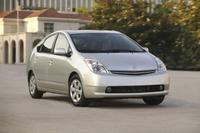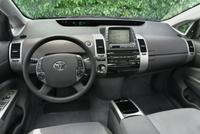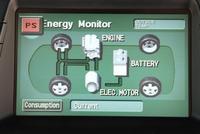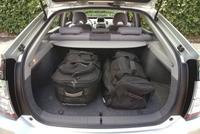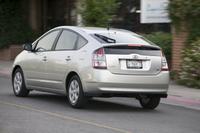New Car Review: 2004 Toyota Prius Hybrid
THE AUTO PAGE
By JOHN HEILIG
SPECIFICATIONS
MODEL: Toyota Prius
ENGINE: 1.5-liter DOHC four/50 kW
electric motor
HORSEPOWER/TORQUE: 76 hp/ 82 lb-ft @ 4,200
rpm/50kW (67hp)/295 lb-ft
TRANSMISSION: Automatic variable
gear ratio
WHEELBASE: 106.3 in.
LENGTH x WIDTH x
HEIGHT: 175.0 x 67.9 x 58.1 in.
STICKER PRICE:
$22,614
Anyone who's been around me for any length of time knows that I'm very pro-hybrid. Although there are hydrogen refueling stations in California, and even a few recharging stations for electric cars, to me the most practical solution for economy cars lies in hybrid designs. As of now, Toyota has the Prius, Honda has the Civic and Impact, and Ford has announced a Hybrid Escape. We also know that GM is working on a GMC hybrid pickup.
Hybrids offer excellent fuel economy with none of the disadvantages of electric or hydrogen cars. No change to the refueling infrastructure is needed with hybrids, whereas with the others you're out of luck if you're away from an outlet plug or gas (literal) station.
This is the second generation Prius. The original was a compact car with very nice manners. This one is a mid-size car with as much interior room as a Toyota Camry. Performance is modest, since there's only a 1.5-liter four under the hood and the 50 kW (67 hp) electric motor can only help so much. But the benefits are still there, and except for a few ultra-modern touches, you'd never know you were driving anything "different."
Power reaches the front wheels through an "automatic variable gear ratio transmission." This means a CVT, or constant velocity transmission with an infinite number of gear ratios. CVT gearboxes aren't really gearboxes, but pulley systems that do a better job of matching gears with engine speed than any other automatic.
Of course, shifting into gear is an experience. There's a small lever in the dash. It's usually in "N" for neutral. To get the Prius moving, you move the lever to the left and down to "D" to go forward, up to "R" to go backward. When you stop, it's difficult to shift back into "N." It's best to push the "P" button to engage the parking brake.
There's no key. You place a fob into a slot in the dash and push "Power" to get the engine going. Don't panic if you don't hear anything. When the electronic dash lights up you know you're turned on.
As with most hybrids, the gasoline engine shuts off when you're stopped, either in your driveway or at a traffic light. When you hit the gas pedal, everything comes to life and you can move away as with any other mid-size with a slightly underpowered engine. But the excitement of driving the Prius negates any complaints about low power.
The Prius is very techy. The speedometer is located at the base of the windshield in the center of the dash. There's a large display in the center of the dash, much like a navigation system in a more conventional car. But this display tells you what your gas mileage is and how much electric power you've regenerated. You don't really need this information, and Toyota could have used a more conventional dash arrangement. But it's also nice to look at the fuel economy figures rise on long trips. We averaged more than 41 mpg for a combination of city and highway driving.
As with conventional cars, there are "Toyota" cruise control switches behind the steering wheel. I felt the audio and HVAC controls on the steering wheel were somewhat confusing, although a Prius owner would learn them in a longer drive period. We changed radio stations when we wanted to increase the temperature a couple of times.
The Prius is rates as a mid-size car. As such, it has excellent rear-seat legroom and an enormous trunk. Set up for carrying passengers, the trunk is rated at 16.1 cubic feet. But like in a hatchback, you can fold the rear seatbacks forward and more than double cargo capacity.
In order to gain excellent fuel economy, the Prius is very aerodynamic, with a Cd of 0.26. You'll find this one in a crowded parking lot.
I felt that with a bottom line of $22,614, the Prius was a bargain. It offers great economy, it's very modern, it's friendly to the environment, and there's a rebate for buying a hybrid. I guess the best testimony for the car came from my wife. We had two cars to choose from for a longish trip and she chose the Prius because of its comfort.
© 2004 The Auto Page Syndicate



